This article was co-authored by Shira Tsvi. Shira Tsvi is a Personal Trainer and Fitness Instructor with over 7 years of personal training experience and over 2 years leading a group training department. Shira is certified by the National College of Exercise Professionals and the Orde Wingate Institute for Physical Education and Sports in Israel. Her practice is based in the San Francisco Bay Area.
There are 16 references cited in this article, which can be found at the bottom of the page.
This article has been viewed 42,950 times.
Perhaps you are determined to improve your overall fitness, or really hope to complete a half-marathon, or just want to better your odds of catching the bus to work as it pulls away. Whether your goal is being able to jog for longer periods of time, or to keep up a sprint over a longer distance, the right mix of preparation, perseverance, proper technique, and patience can help you achieve your running goals.
Steps
Jogging for Longer Periods of Time
-
1Take time to warm up and stretch out. It can be tempting to just get on with the running part of running, but properly preparing your body will pay dividends in your results. A proper warm up can also reduce your chance for progress-derailing injuries, such as a pulled hamstring.
- Warm up your muscles for 10-15 minutes before beginning your workout proper. Start by walking and gradually picking up the pace until you reach a full run.
- If you choose to stretch before your workout, do it after your warmup, as stretching is more effective on loose muscles. Some advise eschewing stretching before the workout altogether, instead preferring to stretch for 5-10 minutes after the workout when muscles are at their most pliable.[1]
- Stretch your hamstrings by lying on the ground and raising each leg straight up in the air. This is considered superior to standing toe-touches because it better isolates the hamstring. Hold for 10-30 seconds.
- Stretch your quadriceps by pulling each leg up behind you while standing. Hold for 10-30 seconds.
-
2Employ interval training and plyometrics. Jogging for longer periods requires greater efficiency, in both your body's utilization of oxygen and your body's motion when your feet are on and off the ground. Specific types of training can improve the efficiency of each.
- Interval training involves running at high speed for short bursts (often 30 seconds to one minute), interspersed with cool-downs of equivalent or slightly longer periods that consist of light jogging or walking. For more detail on an interval training regimen, see How to Increase Your Running Stamina
- Interval training increases your VO2 max, which is essentially the efficiency in which your body uses oxygen to convert calories into energy.[2] Improving this efficiency through more intense running will benefit your ability to keep up a lighter pace of running for longer times as well.
- Plyometrics involves using drills such as jumping rope, skipping, one-legged hops, and high-knee sprints to improve explosive power in the legs so that your feet can spend less time in contact with the ground while running.[3] Maximizing the propulsive power while minimizing the contact time (and thus friction) of each step is one key to more efficient running.
Advertisement -
3Focus on time more than pace while jogging. Prioritize training your body to jog for a specified period of time -- a half-hour, hour, or whatever it may be -- before worrying about how much ground you cover in that time. The pace can be picked up further along in the training process.[4]
- If you are a beginner and/or cannot jog for 30 minutes straight, take brief walking breaks as you go. Don't stop until you reach the 30-minute mark, to train your body to keep moving for that amount of time. Steadily wean yourself off the walking breaks.
- Find a pace that you feel like you could keep up indefinitely once your training moves beyond the beginner stage.
- Keeping an easy pace can reduce your risk of injury.[5]
-
4Stick to your program. Research various running programs and find one that suits your needs, be it an 8-week beginner plan with a weekly schedule,[6] a 10% weekly increase in mileage,[7] or pacing yourself on 800-meter runs to prepare for a marathon.[8]
- Programs with a good deal of variety can help moderate injury risk while also combating the boredom that can come from doing the exact same training the exact same way over and again. Such tedium can make it easier to justify skipping one workout, then another, and so on.
-
5Vary your cardio training. Jogging for longer periods of time requires increasing your cardiovascular endurance, but to break up the monotony and give your sore shins or other parts a break, switching between jogging and exercises like biking and swimming can be quite beneficial.
- As a non-weight bearing exercise, swimming can give a break to sore feet, knees, etc., while providing an equivalent cardio workout. It also gives you a chance to exercise your upper body muscles.
- Bicycling is also easier on the joints than running, and thus can make an effective change of pace. You can also do interval training on a bicycle, mixing bursts of speed with slowdowns just like you do while running.[9]
- Consider rotating days, jogging one day then biking or swimming the next, especially if you are dealing with joint pain related to running.
-
6Be patient but determined. “Slow and steady wins the race,” according to the fabled tortoise, but it also describes the best way to build up your jogging endurance. Injuries are more likely to occur when pushing for results too quickly, and injuries can derail even the best laid training plans.[10]
- Don’t expect immediate results or be frustrated when you can’t go from couch potato to marathon-ready in a few weeks. Remind yourself that you are in this for the long haul, and that every little gain benefits not only your endurance but your overall health.[11]
- That said, if you never push yourself, you’ll never move forward in your training. Push yourself to keep going and reach that day’s goal, even when you are sore, tired, or just want to quit. Unless you think you may be injured, you do need to push through some pain in order to gain.
Sprinting Over Longer Distances
-
1Hit the weight room. While weight training can benefit joggers seeking greater endurance as well, it is particularly beneficial to sprinters. Unlike jogging, sprinting requires short bursts of maximum effort from the muscles over your entire body.
- Try to weight train a couple of times per week, perhaps on Tuesdays and Thursdays between sprint training sessions on Monday, Wednesday, and Friday, for instance.
- There is some truth to "no pain, no gain." You need to push yourself in order to build muscle; at the same time, though, don't risk injury by overexertion. Strive to build lean muscle, not to try out for the next "World's Strongest Man" competition.
- Obviously you want to build up your leg muscles by way of squats, leg presses, and so on. However, you also want to strengthen your abdominal core and shoulders, as arm movement helps propel sprinters forward. Include exercises like sit-ups, leg lifts, and bench and shoulder presses to your workout.[12]
-
2Find the right training spot. While jogging simply requires a treadmill, trail, or decent sidewalk, sprint training is more effective in more particular conditions.
- A running track is the best option for sprint training, since it is flat, marked for distance, and more shock-absorbing for the runner. If a track is unavailable, seek a flat area at least 40 meters long.
- A grass football or soccer field will be easier on your feet and shins especially, while pavement offers more even footing that might protect against ankle or knee sprains. Mix-and-match or find which works best for your body.[13]
-
3Take time to warm up and stretch out. As with distance running training, warm up by starting at a slow pace and steadily increasing to a fast run over several minutes.
- Consider incorporating dynamic stretches after your warmup. Unlike traditional static stretches, dynamic stretches are done while in motion, such as while walking 20 meters or so. They include stretches like walking on the toes or lifting the knees as high as possible.
- Dynamic stretching exercises come with names like “Frankensteins” and “Butt-Kickers,” so they obviously are meant to be intense. Done judiciously, for several minutes after warmup and before workout, they do seem to enhance sprinting performance.
- Do dynamic stretching carefully, as there is a greater risk of injury than with static stretching.
-
4Establish good technique. Sprinting requires you to exert maximum energy, so you don’t want to waste any of it on flailing arms, improper steps, or increased wind resistance.[14]
- Try running on the balls of your feet instead of your heels. Not everyone agrees that this technique is more natural or less likely to cause injury, but it does seem to be preferable for sprinting, since it reduces contact time between foot and ground (and thus friction).[15]
- Don’t over-stride. It may feel like a longer stride gets you further ahead faster, but fewer steps means less propulsive power forward. The goal is to take shorter, quicker strides to maximize power and minimize resistance (ground friction and air resistance). Find a comfortable stride that doesn’t leave you lunging ahead or leaning forward over your feet.
- Do try to lean slightly forward, however, as this will make your body more aerodynamic and less affected by wind resistance.
- Use your arms as well, pumping each one forward and upward in concert with the same-side leg. Keep you elbows slightly bent and hands in a loosely-closed fist.
- Make sure you keep breathing. People have a tendency to hold their breath when exerting themselves, which is not advisable when your body is starving for oxygen during a sprint. There are varying viewpoints on timing and frequency of breathing during a sprint, so the best advice is probably to find a breathing pattern that feels most natural for you.[16] [17]
-
5Don’t try to max out from the beginning. After warming up, don’t go straight into sprinting at full speed. Start at what feels like about 70% intensity, then go up to 80%, 90% and full intensity, so long as you do not feel discomfort that might indicate injury.
- If you have a stopwatch, time out your sprints for 30 seconds. If you’re on a track with markers, go for 200 meters (half a lap). If you have neither, count out about 125 steps per sprint. You can increase these numbers as your training progresses.
- Sprinting depletes the oxygen in your muscles, so it is important to rest between runs. Start out by trying to rest for 3 seconds per second of running (90 seconds after a 30 second sprint). You should rest until your breathing calms to the point where you could make conversation with a fellow runner. Take up to 4 minutes between sprints if necessary.[18]
- Resting means walking, not sitting, however. Keep your muscles loose.
-
6Build up your speed endurance. Once you’ve established a solid routine of sprint training, you can begin to ramp up your ability to keep up a sprint over greater distances. As might be expected, the main methods are more sprinting time, less recovery time (if necessary), and more intensity.
- Increase the time of your sprints from 30 seconds gradually up to 1 or even 2 minutes. Try adding 10-15 seconds per sprint per session, for instance. Gradually decrease the time between sprints to 90 seconds, if you typically take longer.[19]
- Instead of walking to rest between sprints, try doing push-ups, sit-ups, or another strength-training exercise.[20]
- Do more high-intensity sprinting exercises such as a shuttle run or pyramids. A shuttle run involves placing 7 markers at 5-meter intervals and sprinting to and from each in rapid succession.
- A pyramid run involves placing 6 markers at 10-meter intervals (50 meters total), then sprinting to the first maker (10 m) and walking the rest (40 m), then running 20 m / walking 30 m, and so on until you run the full 50 meters back and forth. Rest for 90 seconds between sets of either shuttles or pyramids.[21]
- Try hill sprinting. Find a hill that offers good footing and a manageable steepness, then follow the same procedures as level-ground sprinting. This will be more intense, however, so ramp up your intensity more slowly and allow a little more recovery time. Find steeper hills, go faster, and rest less as you progress.[22]
Preparing Mind and Body
-
1Establish your goals. Be clear as to what you want to achieve by undertaking a running program. It it general fitness? Running in a race? Keeping up with your grandkids in the backyard?
- Set benchmarks that you can “check off” along the way. For instance, jogging for 30 minutes straight, 45 minutes, and so on, or sprinting 40 yards, 60 yards, and up to 100 yards.
- Having clearly-stated goals and benchmarks along the way can help keep you motivated to stick to the program.
-
2Assess your fitness level. Especially if you are older, out of shape, or have underlying medical conditions, consult with a physician regarding your plans to undertake a running program. A realistic assessment of your current fitness level will help you craft an appropriate program.[23]
- Don’t assume you are too old or too out of shape to run, however. Almost anyone can take on and benefit from a running -- or a run / walk -- program.
-
3Equip yourself properly. Running gear is not overly expensive, and investing in the right equipment will make your workouts more efficient and your body less susceptible to injury.[24]
- Choose running shoes, not cross trainers, basketball shoes, etc. Consider visiting a running store where you can be properly fitted for running shoes. Like a race car with bad tires, the performance of a runner with improper footwear will suffer.
- Select lightweight, moisture wicking clothing that will keep you cool and dry in warm weather, and lightweight, breathable layers to keep you warm enough in colder weather. Don’t skimp on socks, either -- keep your feet cool and dry. Women will need a comfortable sports bra as well.
-
4Adopt healthy habits. To get the most out of a running program, you need to fuel your body properly and cut out unhealthy habits that will limit your progress.
- Running burns a lot of calories, so you want to eat lots of high-energy foods like fruits, vegetables, and whole grains -- basically, the kinds of foods you should be eating more of anyway.[25] Lean proteins like chicken, fish, beans, and lowfat yogurt are also good choices. You don’t need to change your diet to be a runner per se; you need to change it to be healthier.[26]
- Drink lots of water. Hydrate your body before, during, and after workouts.
- If you smoke, try to quit. This is a good idea no matter what, of course, but smoking damages the heart and lungs, which are essential for running.
-
5Set a schedule. Make time for running beforehand instead of trying to squeeze it in each day or week. Each week, lay out a daily schedule for your running program, including the variations in your program, actual workout time, and warm up and cool down time.[27]
- If you can visualize how each element of your program fits together, it may make it easier for you to internalize that each routine, each session, and each day are interconnected and important. Skipping a run may not be so easy to rationalize, then.
-
6Find motivation aids. You will likely begin your program with boundless enthusiasm and then feel it wane as you realize that it takes a long time to achieve results. Find out what helps you stay the course and fight to rise above the plateaus you will hit along the way.
- Work with one or more partners. Experience the benefits of camaraderie, commiseration, competition, and good old-fashioned peer pressure. Training alongside another runner or a few may offer the pull or the push you need to keep going.
- Visualize your goal while running. Picture yourself beating your younger brother at the beach sprint during your family vacation this year, or crossing the finish line at the half-marathon. Just stay aware enough that you don't run into something or someone.
- Try listening to music. Does easy listening or heavy metal get you in the right frame of mind to run? Try different styles and see if any work best for you. But again, don't let music become a dangerous distraction.
- Sign up for a charity run. The better your progress in training, the more good you will do on race day. Help yourself while helping others.
Expert Q&A
-
QuestionHow can I run longer without getting tired?
 Shira TsviShira Tsvi is a Personal Trainer and Fitness Instructor with over 7 years of personal training experience and over 2 years leading a group training department. Shira is certified by the National College of Exercise Professionals and the Orde Wingate Institute for Physical Education and Sports in Israel. Her practice is based in the San Francisco Bay Area.
Shira TsviShira Tsvi is a Personal Trainer and Fitness Instructor with over 7 years of personal training experience and over 2 years leading a group training department. Shira is certified by the National College of Exercise Professionals and the Orde Wingate Institute for Physical Education and Sports in Israel. Her practice is based in the San Francisco Bay Area.
Personal Trainer & Fitness Instructor This is just a matter of endurance and working your way up. Just be patient with yourself and stick to a regular running schedule. You'll get better at running for a longer period of time if you're committed.
This is just a matter of endurance and working your way up. Just be patient with yourself and stick to a regular running schedule. You'll get better at running for a longer period of time if you're committed. -
QuestionShould you eat before you go running?
 Shira TsviShira Tsvi is a Personal Trainer and Fitness Instructor with over 7 years of personal training experience and over 2 years leading a group training department. Shira is certified by the National College of Exercise Professionals and the Orde Wingate Institute for Physical Education and Sports in Israel. Her practice is based in the San Francisco Bay Area.
Shira TsviShira Tsvi is a Personal Trainer and Fitness Instructor with over 7 years of personal training experience and over 2 years leading a group training department. Shira is certified by the National College of Exercise Professionals and the Orde Wingate Institute for Physical Education and Sports in Israel. Her practice is based in the San Francisco Bay Area.
Personal Trainer & Fitness Instructor No, you don't want to go out of your way to eat anything before running. You can eat something 2-3 hours before you run, but you're just going to feel bloated and get sick if you stuff your face right before you go jogging.
No, you don't want to go out of your way to eat anything before running. You can eat something 2-3 hours before you run, but you're just going to feel bloated and get sick if you stuff your face right before you go jogging. -
QuestionHow can I improve my breathing while I run?
 Shira TsviShira Tsvi is a Personal Trainer and Fitness Instructor with over 7 years of personal training experience and over 2 years leading a group training department. Shira is certified by the National College of Exercise Professionals and the Orde Wingate Institute for Physical Education and Sports in Israel. Her practice is based in the San Francisco Bay Area.
Shira TsviShira Tsvi is a Personal Trainer and Fitness Instructor with over 7 years of personal training experience and over 2 years leading a group training department. Shira is certified by the National College of Exercise Professionals and the Orde Wingate Institute for Physical Education and Sports in Israel. Her practice is based in the San Francisco Bay Area.
Personal Trainer & Fitness Instructor Monitor your shoulders and steps while you run. If you're super crunched up or tilted forward, it's going to be really difficult to take the deep breaths you need. It's all about giving your diaphragm some space to expand and contract freely.
Monitor your shoulders and steps while you run. If you're super crunched up or tilted forward, it's going to be really difficult to take the deep breaths you need. It's all about giving your diaphragm some space to expand and contract freely.
Warnings
- It is never a bad idea to consult a physician before beginning a running program, even if you are in seemingly good health. Do so especially if you have underlying medical conditions, live a sedentary lifestyle, are over 20 pounds overweight, or are over 40 years old.[28]⧼thumbs_response⧽
References
- ↑ http://www.sparkpeople.com/resource/fitness_articles.asp?id=1565
- ↑ http://www.prevention.com/fitness/fitness-tips/how-run-longer-and-faster
- ↑ http://www.active.com/running/articles/boost-your-endurance-in-7-simple-steps?page=4
- ↑ Shira Tsvi. Personal Trainer & Fitness Instructor. Expert Interview. 7 January 2020.
- ↑ http://www.active.com/running/articles/boost-your-endurance-in-7-simple-steps
- ↑ http://www.runnersworld.com/getting-started/the-8-week-beginners-program
- ↑ https://www.wikihow.com/Increase-Your-Running-Stamina
- ↑ http://www.active.com/running/articles/boost-your-endurance-in-7-simple-steps?page=2
- ↑ https://www.wikihow.com/Increase-Your-Running-Stamina
- ↑ http://www.runnersworld.com/getting-started/the-8-week-beginners-program
- ↑ Shira Tsvi. Personal Trainer & Fitness Instructor. Expert Interview. 7 January 2020.
- ↑ https://www.wikihow.com/Sprint-Faster
- ↑ https://www.wikihow.com/Do-Sprint-Training
- ↑ https://www.wikihow.com/Sprint-Faster
- ↑ http://well.blogs.nytimes.com/2013/01/23/is-there-one-right-way-to-run/?_r=1
- ↑ http://speedendurance.com/2011/12/02/do-sprinters-breathe-when-sprinting/
- ↑ Shira Tsvi. Personal Trainer & Fitness Instructor. Expert Interview. 7 January 2020.
- ↑ http://sportsmedicine.about.com/od/sampleworkouts/a/30sec_sprints.htm
- ↑ http://www.sport-fitness-advisor.com/speedendurance.html
- ↑ http://www.prevention.com/fitness/fitness-tips/how-run-longer-and-faster
- ↑ http://www.sport-fitness-advisor.com/speedendurance.html
- ↑ https://www.wikihow.com/Do-Sprint-Training
- ↑ http://www.runnersworld.com/getting-started/the-8-week-beginners-program
- ↑ http://www.fitnessmagazine.com/workout/running/running-101-a-beginners-guide/
- ↑ Shira Tsvi. Personal Trainer & Fitness Instructor. Expert Interview. 7 January 2020.
- ↑ http://www.fitnessmagazine.com/workout/running/running-101-a-beginners-guide/
- ↑ http://www.runnersworld.com/getting-started/the-8-week-beginners-program
- ↑ http://www.runnersworld.com/getting-started/the-8-week-beginners-program
About This Article
To run for longer, incorporate interval training into your exercise routine, which will help you build stamina. Prioritize training your body to jog for a specified period of time rather than focusing on pace. Varying your cardio by adding biking, swimming, and other non-weight cardio activities can also help you build stamina for running. Train consistently with these techniques in mind and you should start seeing improvements in your endurance. For tips on warming up and how stretching can affect your stamina, read on!
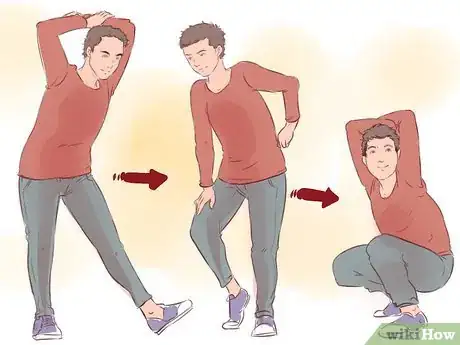
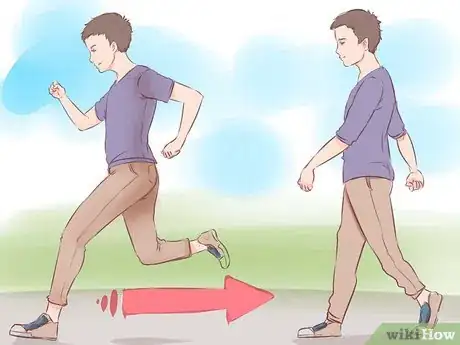


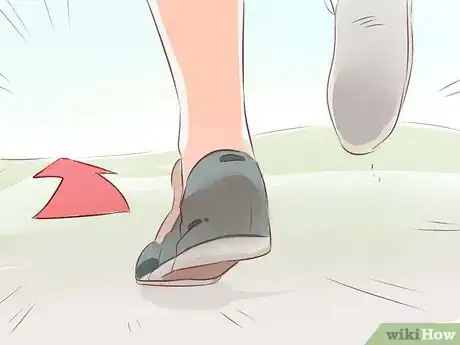




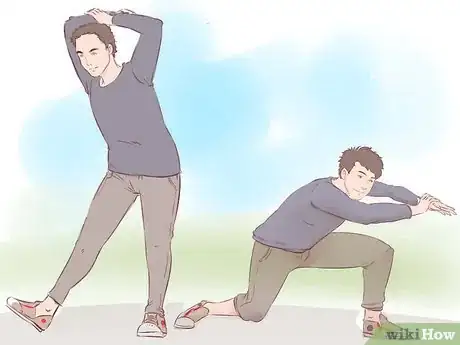
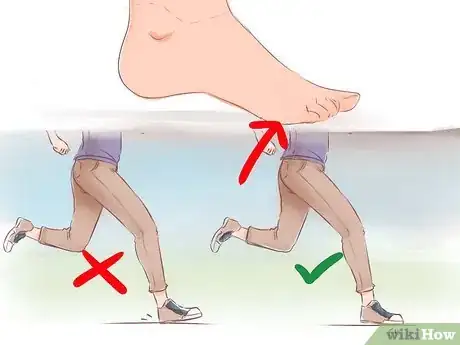

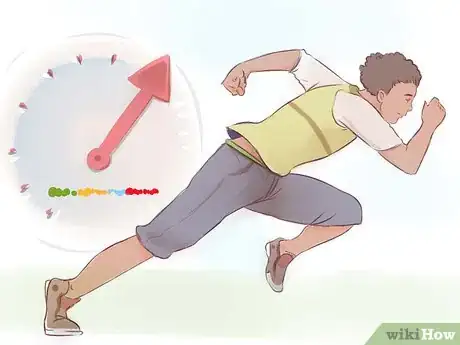








-Step-17-Version-2.webp)


















-Step-17-Version-2.webp)



































